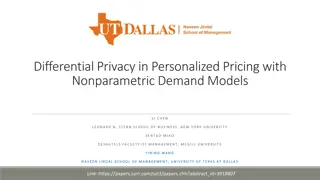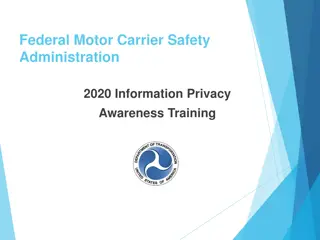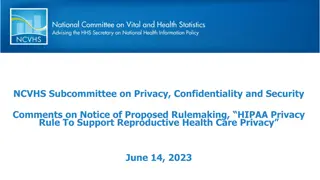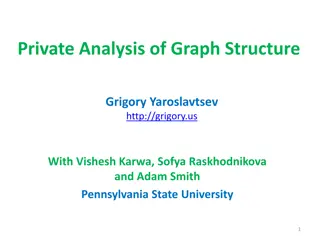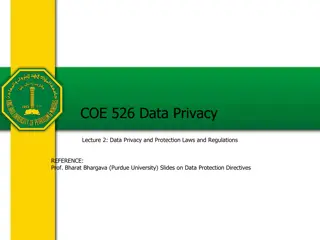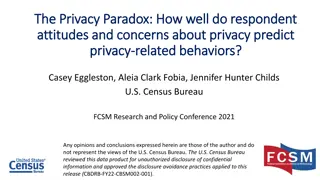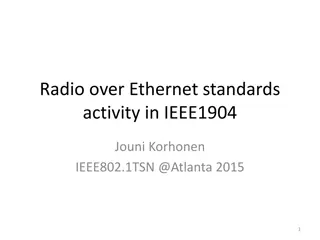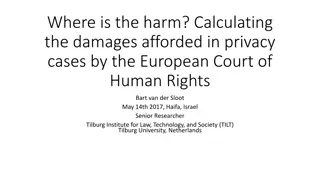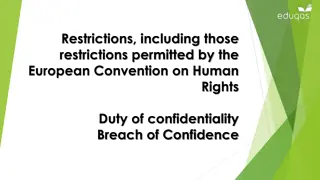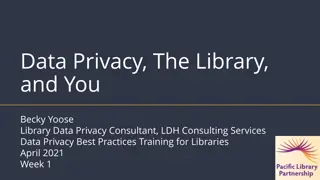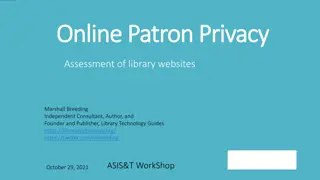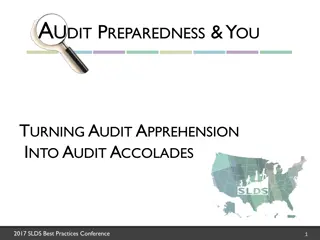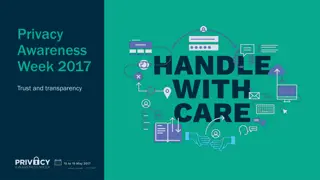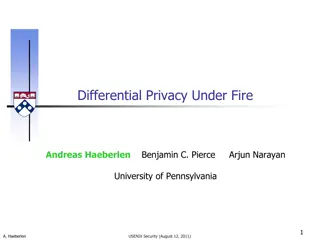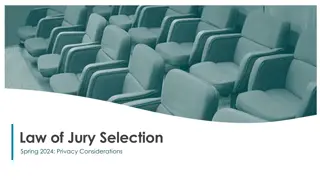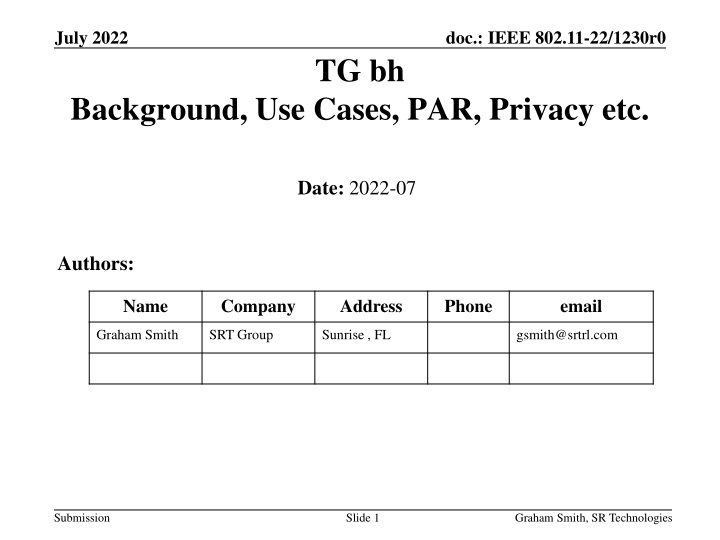
IEEE 802.11-22/1230r0 TG.bh Background and Use Cases Overview
Explore the background and use cases of IEEE 802.11-22/1230r0 TG.bh in July 2022, focusing on pre-association scenarios, privacy concerns, and network deployment issues related to MAC addresses in 802.11 networks.
Download Presentation

Please find below an Image/Link to download the presentation.
The content on the website is provided AS IS for your information and personal use only. It may not be sold, licensed, or shared on other websites without obtaining consent from the author. If you encounter any issues during the download, it is possible that the publisher has removed the file from their server.
You are allowed to download the files provided on this website for personal or commercial use, subject to the condition that they are used lawfully. All files are the property of their respective owners.
The content on the website is provided AS IS for your information and personal use only. It may not be sold, licensed, or shared on other websites without obtaining consent from the author.
E N D
Presentation Transcript
July 2022 doc.: IEEE 802.11-22/1230r0 TG bh Background, Use Cases, PAR, Privacy etc. Date: 2022-07 Authors: Name Company Address Phone email Graham Smith SRT Group Sunrise , FL gsmith@srtrl.com Submission Slide 1 Graham Smith, SR Technologies
July 2022 doc.: IEEE 802.11-22/1230r0 Introduction This presentation was started as a reaction to the results of the Motion to include pre-association Use Cases in order to satisfy the PAR Started out as a detailed look at these Use Cases and the history behind them It grew . NOTE: I could probably never finish this, but I wanted to present to see if this was helping or not. Submission Slide 2 Graham Smith, SR Technologies
July 2022 doc.: IEEE 802.11-22/1230r0 Background: 802.11-2020 (11aq) RCM was prevalent at the time and 802.11aq attempted to control it. 802.11-2020 has the 11aq privacy clause 12.2.10. RCM TIG was created soon after. Submission Slide 3 Graham Smith, SR Technologies
July 2022 doc.: IEEE 802.11-22/1230r0 Background RCM TIG 19/588r2Summary of discussions on randomized and changing MAC addresses 2014-2019 (Formation document for the RCM TIG) Excerpts: inclusion of MAC randomization as a privacy enhancing feature in the .11aq Pre- Association Service Discovery Task Group amendment to the 802.11-2016 The WBA had raised with IEEE 802.11 that "A single device using different MAC addresses in different bands and/or different SSIDs." The IEEE 802.11 responses was: "[W]e agree that band steering in this scenario is likely an issue. 802.11 WG should look into this, perhaps providing recommendations about SSID assignment, depending on network deployment and goals. 802.11 should coordinate with Wi-Fi Alliance on this topic. "[C]lient steering is likely an issue. 802.11 WG should look into this. "We realize that some types of network analytics and troubleshooting are done at the low layers of the network stack, and don t have access to high-level concepts for identification. 802.11 WG should look into this." Submission Slide 4 Graham Smith, SR Technologies
July 2022 doc.: IEEE 802.11-22/1230r0 Background RCM TIG Group Report 19/1442r9 3 Use-Cases (selection summaries showing need for pre-association ) 3.1Initial infrastructure connection steering Before connecting to the 802.11 network, the phone scans to discover the available APs, by sending Probe Requests, ANQP or other public action frames, etc. During this scanning, the infrastructure monitors the signal levels received from the smartphone at multiple APs and bands on those APs, determines which AP and band will provide the best service, and steers the client to that AP. 3.2Access control and arrival detection in a home environment The parent wants all these devices to be recognized when attaching to the 802.11 network, without launching an application or using a portal. And, this needs to use a method that the kids can t hack and circumvent. home network cannot recognize or determine when a authorized phone is in range and should be allowed on the network, or what permissions should be granted once it is associated. 3.8Rogue detection in infrastructure networks Non-AP STAs could also be listed on a known client list, by MAC address, and thereby unexpected/unwanted client devices in the service area can be detected, by detecting unknown MAC addresses. The Point is Pre-Association Use Cases were the first considered (3.1 and 3.2) plus others. Submission Slide 5 Graham Smith, SR Technologies
July 2022 doc.: IEEE 802.11-22/1230r0 Background TGbh PAR 5.2.b Scope of the project: This amendment specifies modifications to the medium access control (MAC) mechanisms to preserve the existing services that might otherwise be restricted in environments where STAs in an Extended Service Set (ESS) use randomized or changing MAC addresses, without affecting user privacy. User privacy includes exposure of trackable information to third parties or exposure of an individual's presence or behavior. This amendment introduces mechanisms to enable session continuity in the absence of unique MAC address-to-STA mapping. For STAs in an ESS that use randomized or changing MAC addresses, this amendment preserves the ability to provide customer support, conduct network diagnostics and troubleshooting, and detect device arrival in a trusted environment. VOTE November 5, 2020, PAR Motion Passed Unanimous (37 participants) Note: The term STA is used but doubtful if APs were intended to use RCM. The best reading is possibly mobile STA From hereon, the term STA refers to a non-AP STA. Submission Slide 6 Graham Smith, SR Technologies
July 2022 doc.: IEEE 802.11-22/1230r0 Conclusion from Background The TGbh scope is often expressed as consider use cases that used to work, and have been broken (by RCM) The market introduced RCM but, in many cases specified same address for same BSS. All the work leading up to the PAR had primary Use Cases as per TGbh cases 4.1, 4.2 (and others) that referred to the network needing to recognize non-AP STA prior to association. PAR uses the term the existing services No objections on the PAR vote or indeed the TIG document (unanimous) Hence, at the time, it was understood that to fully meet PAR, TGbh needs to have scheme(s) that satisfy use cases that used STA identification prior to 4-way HS. Submission Slide 7 Graham Smith, SR Technologies
July 2022 doc.: IEEE 802.11-22/1230r0 OK, what s the TGbh problem? Some TGbh members have expressed opinions that it is not required to have a scheme where the STA can be identified prior to Association and voted accordingly. Assumption may be that some members are of the opinion that the proposed schemes are not needed and/or do not satisfy the user privacy requirement. Note that the PAR passed originally with no opposition. It should be noted that proposed pre-association schemes DO MEET ALL THE OTHER USE CASES. The Privacy side can be examined in detail. Submission Slide 8 Graham Smith, SR Technologies
July 2022 doc.: IEEE 802.11-22/1230r0 Some Proposed Pre-Association schemes I will not dwell on the details of these schemes. Just to note that we do have several proposed solutions which do meet all the Use Cases. MAAD AP sends a new MAC address (in 4-way HS msg 3) every association and STA uses that as TA in the next association IRM STA sends a new MAC address (in 4-way HS msg 2) every association and STA uses that as TA in the next association RRCM STA sends a seed (16 octets in 4-way HS msg 2) in each association, then AP and STA, using PTK, independently generate one (or more) MAC addresses to be used in next association. IRMA STA sends IRM Key in each association(in 4-way HS msg 2) and in next association uses a random TA plus a hash (in Association Request). AP matches TA and hash to key. Full details of above are given in respective presentations. These will be collectively referred to as Pre-Schemes The questions should be: 1. Do we need any of them, in addition to Device ID, in order to satisfy the PAR? 2. Should we have alternative schemes in TGbh or just stick to one (Device ID)? Submission Slide 9 Graham Smith, SR Technologies
July 2022 doc.: IEEE 802.11-22/1230r0 Back to the beginning Presentations were given in WNG back in 2014 These give insight as to the problems that needed solving and as to why RCM happened. Submission Slide 10 Graham Smith, SR Technologies
doc.: IEEE 802.11-14/0888 r00 November 2013 Wi-Fi Privacy Concerns Seattle Police Deactivate Wi-Fi Spy Grid After Privacy Outcry (Nov 2013) A DHS and Seattle police network collecting location information CreepyDOL WiFi surveillance project debuts at Blackhat/DEFCON (Aug 2013) DIY surveillance with low-cost Wi-Fi based sensors that capture MAC addresses Wi-Fi Trashcans Now Silently Tracking Your Smartphone Data (Aug 2013) ... the company boasted that the cans, which included LCD advertising screens, "provide an unparalleled insight into the past behavior of unique devices" and hence of the people who carry them around "Technopanic" mounts over Google's Wi-Fi Privacy violations (Mar 2013) A DHS and Seattle police network collecting location information Slide 11 Paul Lambert, Marvell Submission
doc.: IEEE 802.11-14/0888 r00 November 2013 Privacy Threats Source of Threats: Hackers, private investigators, stalkers, paparazzi Marketing firms and retail outlets Police, Government Agencies Non-threats: Marketing firms and retail outlets (with user approval) Personal home automation (of home user) ... Etc. It is very important to identify ways to enable tracking when it is a service , but prevent unauthorized tracking Slide 12 Paul Lambert, Marvell Submission
doc.: IEEE 802.11-14/0888 r00 November 2013 Passive Scanning and Monitor APs The primary scenarios to consider that are a threat and not services are passive monitoring and APs used for monitoring Slide 13 Paull Lambert - Marvell Submission
July 2022 doc.: IEEE 802.11-22/1230r0 Original privacy concerns Source of Threats: Hackers, private investigators, stalkers, paparazzi) Marketing firms and retail outlets (User may Opt-In) Police, Government Agencies Big Example was paparazzi tracking Jennifer Lopez ( J Lo ) Almost exclusively Passive monitoring, so we look at that first. SO, schemes proposed for TGbh must at least not violate these original Privacy requirements. Submission Slide 14 Graham Smith, SR Technologies
July 2022 doc.: IEEE 802.11-22/1230r0 Passive Monitoring and Tracking RCM prevents passive monitoring of probes. Same if any pre-scheme is used. As explained in 22/955r0, with all pre-schemes , probes use random MAC address (RMA) unless need to be identified (e.g., steering). Using allocated address while in range of wanted AP/BSS is not a problem (address is a one-time address ). Must use same TA across ESS. Association to same AP/BSS with same address (11aq) is sort of trackable in that it is known that STA has been there before. Pre-schemes all use one-time addresses, so this scenario is solved. Listener cannot know it is the same STA returning. Submission Slide 15 Graham Smith, SR Technologies
July 2022 doc.: IEEE 802.11-22/1230r0 MAC Address and Reassociaton Just to be clear, when reassociating within an ESS the STA must use the same address. This is the Specification. Hence, with pre-scheme and RCM , STA uses same one-time address This should also happen with RCM, with Device-ID, and with pre- schemes All a listener knows is that a STA is connecting to this ESS. Listener cannot tell the difference between RCM and pre-scheme address. Listener will never see that address again BUT, ESS could choos to use a pre-scheme address to aid steering because it does know that the STA is a friend . Submission Slide 16 Graham Smith, SR Technologies
July 2022 doc.: IEEE 802.11-22/1230r0 It should be clear that the pre-schemes do counter the original concerns. (except for the Police, Government Agencies , it makes them harder) Now we look at Spoofing concerns. Submission Slide 17 Graham Smith, SR Technologies
July 2022 doc.: IEEE 802.11-22/1230r0 Spoofing scenarios Scenario 1 - Dastardly organization sets up APs spoofing a target s home network. Multiple APs are set up in an area of interest. - STA comes in range and attempts to associate (fails). - STA has exposed the current one-time address - Dastardly organization tracks the STA around the area. Submission Slide 18 Graham Smith, SR Technologies
July 2022 doc.: IEEE 802.11-22/1230r0 Scenario 1 - Points Listener only knows it is a STA that is a member of that Home network, not the specific user. Even using RCM, the mere fact the STA tried to associate identifies it as a member of that home network. And can still be tracked simply by attempting to associate. If STA returns home, true, dastardly organization knows that same user visited the spoof APs and returned home, but not who it is (from the address). Any STA returning home irrespective of address, RCM or one-time , can be observed. As being home . Address is changed as soon as home so cannot be used to track again. Compared to RCM (which does not support the Use Case), pre-schemes , which do support the Use Case, are not further compromised. Need to ask how practical is this spoof and what does it really achieve? Does using a pre-scheme at Home make the user any less private? Even, if user not using a pre-scheme , this scenario still possible with RCM (and hence Device ID). Submission Slide 19 Graham Smith, SR Technologies
July 2022 doc.: IEEE 802.11-22/1230r0 Scenario 1 - The Paparazzi case J Lo is in London, the paparazzi knows she has a favorite restaurant and likes to hang out there. Sniffing is no good, as no way to recognize the TA. A spoof AP is used spoofing J Lo s home SSID. J Lo visits the restaurant (coming in the back door). The spoof AP notes a STA tries to associate and (irrespective of the TA) simply assumes it must be J Lo . Even if J Lo is using a pre-scheme at home, it makes no difference. The TA is still an RMA. (RCM, Device-ID the same) Submission Slide 20 Graham Smith, SR Technologies
July 2022 doc.: IEEE 802.11-22/1230r0 Scenario 1 Final Thoughts Is there really any real privacy concern here compared to simply noting that a STA tries to associate? Aside - How to stop the STA from sending Association Request to a spoof? This is a problem outside of the MAC address issues. Probably a TGbi issue, but I do have suggestions and have prepare a separate presentation. 22/1219r0 Submission Slide 21 Graham Smith, SR Technologies
July 2022 doc.: IEEE 802.11-22/1230r0 Scenario 2 Is there a Scenario 2 ? STAs use a one-time address so impossible for listener to know if this is a returning STA. STAs use steering probes with same address, but again it is a one-time address for this association to this ESS only. Knowing an unknown STA is in a vicinity is not useful (RCM is the same) STAs will use RMAs for all other probes. So can t be tracked or identified. The one-time address is not an identifier of the user/phone. (The pre-schemes can be used together with Device-ID for that) Slide 22 Submission Graham Smith, SR Technologies
July 2022 doc.: IEEE 802.11-22/1230r0 CONCLUSIONS The Pre-schemes do not have a unique privacy problem. They are an improvement on RCM, and they satisfy Use Cases as required by the PAR. 802.11, WBA and other organizations are expecting TGbh to provide solutions to specified Use Cases Submission Slide 23 Graham Smith, SR Technologies
July 2022 doc.: IEEE 802.11-22/1230r0 Use Cases The pre-schemes are designed to not only satisfy Use Cases where the STA can be identified prior to Association, but also satisfy all the other Use Cases as well. The questions facing TGbh are: Are there any Use Cases that are not covered by Device ID? use cases that used to work, and have been broken Should TGbh offer just one or alternative schemes consider? Let s now look at selected Use Cases Submission Slide 24 Graham Smith, SR Technologies
July 2022 doc.: IEEE 802.11-22/1230r0 Use Cases examined Introduction First, let s refresh ourselves on BTM and Neighbor Reports as this has been quoted as covering the Steering use cases Disclaimer: I will not pretend to be an expert, but the following is based upon reading the Spec and comments on the Reflector. If I have something wrong, then more than happy to update these slides Submission Slide 25 Graham Smith, SR Technologies
July 2022 doc.: IEEE 802.11-22/1230r0 Steering BTM & Neighbor report BTM (BSS transition management) Post association Action frames: BTM Query Non-STA can request candidate list or can include candidate list to show preferences Query reason (1st assoc., load balancing, deauth, low RSSI etc.) BTM Request (AP response to Query or unsolicited) AP sends BSS Transition Candidate list (in order) (out of scope on how to order etc.) BTM Response Target BSSID Main uses are BSS Shutting down, re-direct STA, load balancing Candidate list is Neighbor Report elements Neighbor Report request can be sent by non-AP STA to associated AP Report sent by AP contains information on APs (in the ESS) - only capabilities How to get contents is out-of-scope but may be from measurement reports from STAs within the BSS . Loading not included NOTHING I can see on how STA or AP knows the best BSS. Up to an App? Submission Slide 26 Graham Smith, SR Technologies
July 2022 doc.: IEEE 802.11-22/1230r0 Neighbor Report ANQP I have been looking into the Neighbor Report ANQP. I can only find it used in 11.53 Out-of-band discovery of a 6GHz BSS . Therein it states: An AP that operates in the 2.4 GHz or 5 GHz band and that is in the same co-located AP set as one or more 6 GHz APs shall include the Advertisement Protocol element in Beacon and Probe Response frames that it transmits and shall support responding with a Neighbor Report ANQP-element that include at least the SSID information of all the 6 GHz APs in the same co-located AP set, except the 6 GHz APs that do not intend to be discovered. STA sends Query ID for a Neighbor report Use the ANQP procedure to send an ANQP request with a Query ID corresponding to Neighbor Report to the reporting AP to retrieve the SSID of the 6 GHz APs, including the reported AP So, a STA can send the ANQP Query, and AP responds with a Neighbor Report ANQP. How to get the contents is out-of-scope. Submission Slide 27 Graham Smith, SR Technologies
July 2022 doc.: IEEE 802.11-22/1230r0 ReAssociation to the same ESS All BSSs in an ESS have the same SSID Reassociation Request Can reassociate to same or a new AP in ESS RSNE contained in Associate included in Reassociation Must use same TA even if using RCM If MAAD, AP should either not include a new Address, or can repeat the same Address (better) If IRM, or RRCM, then STA must either omit the new Address or provide the same one (better). Decision to re-associate can be decided using BSS Transition Management (BTM) Query, Request, Response. Submission Slide 28 Graham Smith, SR Technologies
July 2022 doc.: IEEE 802.11-22/1230r0 Pre-Association Steering (4.1) The user brings a phone within range of a multiple-AP infrastructure. Before connecting to the 802.11 network, the phone scans to discover the available APs, by sending Probe Requests. How does STA know it is an ESS? What is the requirement? FIND THE BEST AP Criteria? closest, least loaded, best throughput, least latency? Is Neighbor Report ANQP needed, was it used? STA still needs to have same address throughout. Example of existing application where STA does not associate before selection? STA recognizes SSID (ESS), sends probe(s) Probe Responses only from APs interested . Does AP need to know the STA beforehand? Submission Slide 29 Graham Smith, SR Technologies
July 2022 doc.: IEEE 802.11-22/1230r0 Home Control (4.2) such implementations already in current market for many years and widely used in all kinds of AP and mobile AP product AP simply has a list of known MAC Addresses AP can also have a list of known blocked MAC Addresses. Obviously does not work if RCM Device ID will work post association. Assumes a blocked STA still can associate Pre-schemes would work pre-detection Stored MAC address in the new one issued at the prior association. Submission Slide 30 Graham Smith, SR Technologies
Use case 4.2: Access Control function in cellphone/mobile AP block/allow list function Brand and model System Red Mi Note5(Xiaomi) Yes Android 9 Honor PE-TL20 Android 4 Yes HTC D10w Android 6 Yes Honor 10 Harmony OS Yes Honor 50 Android 12 Yes Oppo reno 5 pro Android 11 Yes Oppo repo 6 Android 11 Yes Oppo Find X5 Android 12 Yes Oppo A96 Android 11 Yes Iphone 13 IOS No
July 2022 doc.: IEEE 802.11-22/1230r0 Steering Allowed/disallowed (4.9&4.10) It is very common, in restricted areas, to have in- lists of devices allowed, and the AP only responds to the known STAs, e.g., a non-public area of a nuclear plant. A small set of devices are known and deemed safe to connect to the network The AP only responds to those known STAs*. Any other STA is ignored. If a STA now uses RCM, the AP either does not reply to anyone, or replies to everyone, both creating operational and security exposure. AP would not accept association from the wrong devices, BUT going all the way to that stage is immensely wasteful of resources for both sides, so directing the STA early results in a better experience. * argument that an AP shall respond to any probe request, otherwise it violates 11.1.4.3.4, weak, and dumb. Probe attacks are an easy way to overload the cell and APs protect themselves. Submission Slide 32 Graham Smith, SR Technologies
July 2022 doc.: IEEE 802.11-22/1230r0 Steering Managed Buildings (4.9&4.10) In managed buildings, it is common to have an operational SSID, and split the devices to bands based on what they are. For example, door sensors would connect to 2.4 GHz (because they are longer range and low traffic volume, with low emergency level) while smoke detectors or fire alarms connect to 5 GHz (they are usually closer to the APs, the sensitivity of their message is higher) The AP has different mechanisms to make this selective response. In most cases, it includes a sort of in-list or out-list. can either not respond selectively (devices not in the in-list, or in the out- list), or manufacture an adapted response. As 11be and WFA talks about AR/VR, more schemes where devices matching time-sensitive applications would be redirected to 6 GHz, and any other devices would be blocked from 6 GHz access. Submission Slide 33 Graham Smith, SR Technologies
July 2022 doc.: IEEE 802.11-22/1230r0 4.9, 4.10 Might be similar to 4.2. Network has different SSIDs based on restricted access:, e.g: Restricted and non-restricted Could be one ESS (same SSID) but certain BSSs restricted? Association allowed only to STAs that are registered Device ID would not work Pre-schemes need to be registered with the address allocated on association. Submission Slide 34 Graham Smith, SR Technologies
May 2022 Doc.: IEEE 802.11-22/818r3 Virtual BSSID (use case 4.26) [Network topology] Gateway connects with AP2,AP3 via wired/wireless backhaul. (Precondition1)GW records [STA MAC, BSSID,PWD] information, and can create a unique BSSID for an approved STA. STA also save [BSSID, SSID, PWD] information in its database once it has ever connected with that BSSID. (Precondition2) both AP2 and AP3 have a public BSSID. [STA1] STA1 sends a broadcast probe request frame.[identified probing] [AP2,AP3] calculate and report the CSI and RSSI information of the received probe request frame from STA1 to Gateway respectively. [Gateway] instruct a physical AP(like AP2) to create a private BSSID for that STA. [identified probing] [AP2,AP3] the public BSSID respond with probe response frame. [AP2] create a private BSSID and sent a unsolicited probe response frame to the STA. [STA1] associate with the private BSSID automatically. [pre- association client steering] [Gateway] may move the private BSSID from one physical AP to another one according to STA location.[BSSID move with STA] Internet Gateway AP3 AP2 100CH/5GHz 64CH/5GHz STA1 Submission
July 2022 doc.: IEEE 802.11-22/1230r0 Pre-schemes and Device ID are optional The TGbh draft is 100% optional and opt-in . APs/BSSs can select what they want to support, or, actually, what the application they are using wants to support. If the network want to use a pre-scheme , and/or Device ID it can advertise support as such If the network does not have a need for either, it does not advertise support. If a vendor does not want to support any of TGbh schemes, then it need not Should that stop other vendors from providing these services? Submission Slide 36 Graham Smith, SR Technologies
July 2022 doc.: IEEE 802.11-22/1230r0 Almost Final Thoughts To satisfy the PAR the TG should offer solutions to all the Use Cases these Use Cases have existed back to the original TIG, they are not new. They were adopted with unanimous support. Use Cases 4.2, 4.9, 4.10 and maybe 4.26 do not appear to be solved by Device ID Without a solution to these there is a good argument that it should not be possible to go to a Draft 1.0 (feature complete). If (even after this presentation) there is such a large contingent that for some reason is still voting No on any pre-scheme, then the TG may try to amend the PAR or vote to disband. Submission Slide 37 Graham Smith, SR Technologies
July 2022 doc.: IEEE 802.11-22/1230r0 Final Thoughts I understand that some pre-schemes may seem at first sight to be too simple, and the fine details may not be obvious, but hopefully, understanding how they function makes it clear that they do work well, and have privacy. I will not go into details again, but we do have workable pre-schemes The work of the TG should now be to select one or more of the pre-schemes, (text exists for all these) or indeed consider other submissions, before going to D1.0. OR amend the PAR OR disband the TG (add Device ID via TGme) Submission Slide 38 Graham Smith, SR Technologies
July 2022 doc.: IEEE 802.11-22/1230r0 QUESTIONS? Submission Slide 39 Graham Smith, SR Technologies
July 2022 doc.: IEEE 802.11-22/1230r0 Straw Poll 1 TGbh should select a scheme or schemes that address Use Cases 4.2, 4.9 and 4.10 where non-AP STA recognition is required prior to association, for inclusion in the TG Draft? Submission Slide 40 Graham Smith, SR Technologies
July 2022 doc.: IEEE 802.11-22/1230r0 Straw Poll 2 (Dependent upon Straw Poll 1 result) Should TGbh change its PAR? Submission Slide 41 Graham Smith, SR Technologies
July 2022 doc.: IEEE 802.11-22/1230r0 Straw Poll 3 (Dependent upon Straw Poll 1 and 2 results) Should TGbh be disbanded? Submission Slide 42 Graham Smith, SR Technologies

